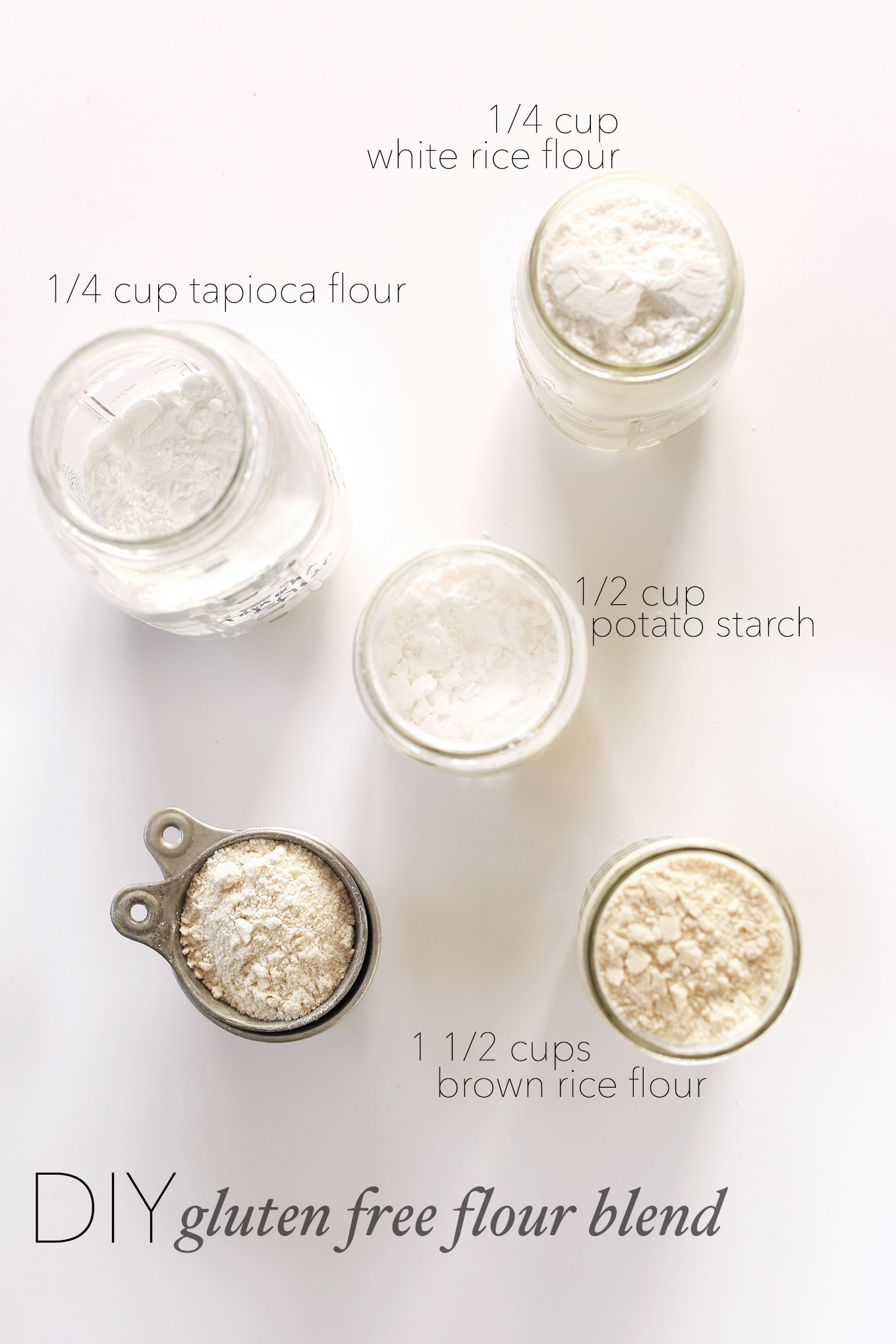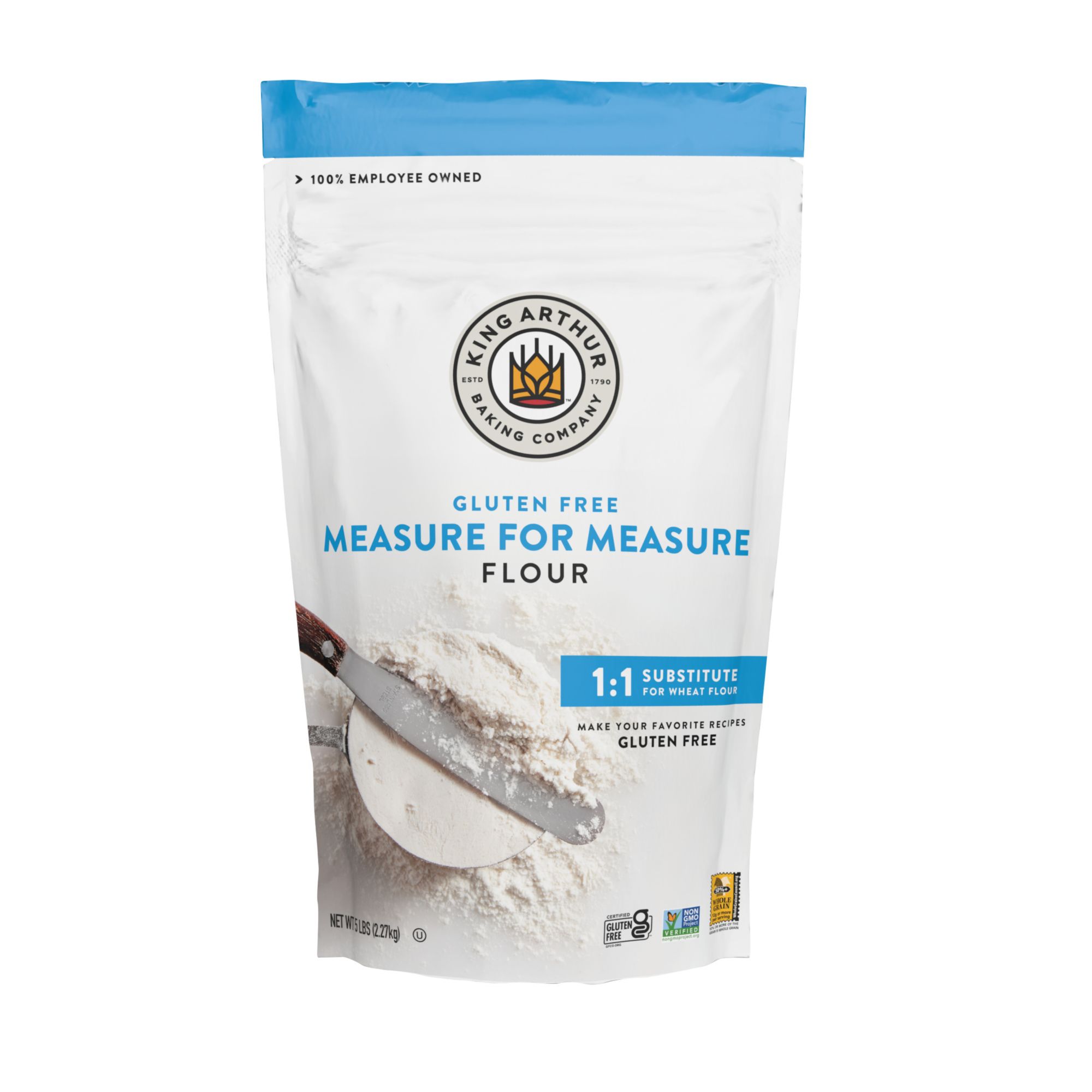Measuring ingredients for gluten-free baking is crucial. Accurate measurements ensure your recipes turn out right.
Gluten-free baking requires precision to achieve the best results. Unlike traditional baking, gluten-free ingredients need careful handling. Missteps can lead to dry or crumbly baked goods. Understanding how to measure these ingredients correctly is key. This guide will help you learn the best practices for measuring.
You will discover tips and tricks to make your gluten-free baking successful. Proper measurements can make a huge difference in your final product. Let’s dive into the world of gluten-free baking and master the art of measuring ingredients accurately. Your gluten-free treats will thank you!
Introduction To Gluten-free Baking
Gluten-free baking is more than just swapping one ingredient for another. It’s a unique process that requires precision and understanding. For those with gluten intolerances or celiac disease, gluten-free baking provides a way to enjoy baked goods without health risks. But it comes with its own set of challenges.
Importance Of Accurate Measurements
Accurate measurements are crucial in gluten-free baking. Gluten-free flours have different properties compared to wheat flour. They absorb moisture differently and have various textures. Using the correct amount ensures your baked goods have the right consistency.
For example, rice flour is lighter than almond flour. So, a cup of rice flour will weigh less than a cup of almond flour. This difference affects the final product. Weighing ingredients with a kitchen scale can help achieve precision. It gives consistent results every time.
Common Challenges
Baking gluten-free can be tricky. The most common challenge is achieving the right texture. Without gluten, baked goods can be crumbly or dense. Binding agents like xanthan gum or guar gum are often used to mimic the elasticity of gluten.
Another challenge is ensuring even mixing. Gluten-free flours can have varied particle sizes. This can lead to uneven distribution of ingredients. Sifting flours before mixing can help. It breaks up clumps and ensures a smoother batter.
Finally, gluten-free baked goods can dry out quickly. Storing them properly is essential. Airtight containers or freezing can extend their freshness.

Credit: minimalistbaker.com
Essential Tools For Measuring
Measuring ingredients correctly is crucial in gluten-free baking. It helps ensure your baked goods turn out perfect every time. Using the right tools can make this process simple and accurate. Let’s dive into the essential tools for measuring.
Digital Kitchen Scale
A digital kitchen scale provides precise measurements. This is vital for gluten-free baking. Flour and other ingredients need to be exact. Too much or too little can ruin the recipe. A digital scale eliminates guesswork. Place your bowl on the scale. Reset it to zero. Add your ingredient until you reach the desired weight. Easy and accurate. Every gluten-free baker should have one.
Measuring Cups And Spoons
Measuring cups and spoons are also important. They help measure small quantities of ingredients. Use them for baking powder, baking soda, or spices. Always use dry measuring cups for dry ingredients. Use liquid measuring cups for liquids. This ensures accuracy. Level off dry ingredients with a flat edge. This provides an exact measurement. Measuring spoons are great for small amounts. They keep your recipe balanced and precise.
Choosing The Right Flours
Hey friends, today we’re diving into the world of gluten-free baking. One thing you’ll quickly learn? Choosing the right flours is key. It’s not as simple as using regular wheat flour. Different flours bring different textures and flavors. So, let’s talk about how to choose the right ones for your gluten-free treats.
Popular Gluten-free Flours
There are many gluten-free flours out there. Each one has its own unique taste and texture. Here are some popular choices:
- Almond Flour: Made from ground almonds. It gives a nutty flavor and moist texture. Great for cakes and cookies.
- Rice Flour: This is a staple in many gluten-free recipes. It’s light and fine, perfect for bread and muffins.
- Coconut Flour: Absorbs a lot of liquid. Use it in small amounts. It’s best for dense baked goods like brownies.
- Sorghum Flour: Mild and slightly sweet. Works well in pancakes and quick breads.
Blending Flours For Best Results
Here’s a little secret: blending flours can give you the best results. Using just one type of flour often doesn’t cut it. Why? Because no single flour can mimic the properties of wheat flour on its own. Here’s how to do it:
- Mix Different Flours: Combine a few different flours. This can balance out their strengths and weaknesses.
- Use Starches: Add tapioca starch or potato starch. They help bind the ingredients and give a chewy texture.
- Experiment: Try different combinations until you find what works best. It’s like finding the perfect harmony.
For example, I once tried making cookies with just coconut flour. They turned out dry and crumbly. But when I mixed it with almond flour and a bit of tapioca starch? Perfectly chewy and delicious.
So, don’t be afraid to mix and match. Your perfect gluten-free baked good is just a blend away!
Techniques For Measuring Dry Ingredients
Gluten-free baking requires precise measurements for perfect results. Dry ingredients play a crucial role in the texture and structure of your baked goods. Using the right techniques ensures accuracy and consistency in your recipes. Here are some essential methods for measuring dry ingredients.
Scooping And Leveling
Use a spoon to fill your measuring cup. Scoop the ingredient into the cup until it overflows. Avoid packing the ingredient down. This helps maintain the right amount. Next, use a flat edge, like a knife, to level off the excess. This method works well for flour, sugar, and similar ingredients. Accurate measurements lead to better baking outcomes.
Sifting For Precision
Sifting dry ingredients can make a big difference. It helps incorporate air and removes lumps. Place your ingredient in a sifter or fine mesh strainer. Shake or tap gently over your mixing bowl. Sifted ingredients are lighter and mix more evenly. This technique is especially important for gluten-free flours. It ensures a smooth, lump-free batter or dough.
Measuring Liquid Ingredients
Hey friends, today I’ll show you how to measure liquid ingredients for gluten-free baking. Measuring liquid ingredients correctly is super important. It can make or break your recipe. Trust me, I’ve been there! Imagine your cake turning out flat or your cookies being too dry. No one wants that, right? So let’s dive into the right way to measure liquid ingredients for your gluten-free baking adventures.
Using Liquid Measuring Cups
The first thing you need is a liquid measuring cup. These are different from dry measuring cups. They are usually made of glass or plastic and have a spout for easy pouring. Here’s why they are important:
- Accuracy: Liquid measuring cups are designed to measure liquids accurately. Dry measuring cups can spill, making it hard to get the right amount.
- Ease of Use: The spout makes it easy to pour liquids into your mixing bowl without making a mess.
- Convenience: They often have multiple measurements marked on the side, so you can measure different quantities with one cup.
So, grab your liquid measuring cup and let’s move on to the next step.
Reading Measurements At Eye Level
Now that you have your liquid measuring cup, let’s talk about reading the measurements. This part is crucial. You must read the measurements at eye level. Here’s how:
- Place the Cup on a Flat Surface: Put the measuring cup on your kitchen counter or table. This ensures the liquid settles evenly.
- Get Down to Eye Level: Bend down so that your eyes are level with the measurement markings. Looking from above can give you a wrong reading.
- Check the Meniscus: The meniscus is the curve you see at the top of the liquid. Make sure the bottom of the curve is at the measurement line you need.
It may seem like a small detail, but trust me, it makes a big difference.
I remember the first time I baked a gluten-free cake. I didn’t read the measurements at eye level, and my cake was too dry. It was disappointing, but I learned my lesson. Now, I always make sure to follow these steps and my baking results are much better.
So, friends, measuring liquid ingredients correctly is key to successful gluten-free baking. Use the right tools and techniques, and you’ll be on your way to delicious, perfectly baked treats. Happy baking!
Converting Recipes To Gluten-free
Converting recipes to gluten-free can be a bit tricky. Traditional recipes rely on gluten for structure and texture. Removing gluten changes the balance. But with some adjustments, you can create delicious gluten-free treats.
Understanding Ratios
Understanding ratios is key to successful gluten-free baking. Gluten-free flours have different properties than wheat flour. This means you need to adjust the ratios. For instance, a mix of several gluten-free flours often works better than just one. Common blends include rice flour, almond flour, and tapioca starch.
Another important ratio is the liquid to dry ingredients. Gluten-free flours absorb more moisture. You might need to add extra liquid to your recipe. This keeps your baked goods from being dry and crumbly.
Adapting Traditional Recipes
Adapting traditional recipes starts with choosing the right gluten-free flour blend. Not all gluten-free flours are created equal. Some have stronger flavors or different textures. Experiment with different blends to find what works best for your recipe.
Next, consider adding binding agents. Gluten provides elasticity in doughs and batters. Without it, your baked goods might fall apart. Xanthan gum and guar gum are popular choices. Use them sparingly, as too much can make your recipe gummy.
Finally, adjust your baking times and temperatures. Gluten-free baked goods often need lower temperatures and longer baking times. This helps ensure they cook evenly without burning.
Tips From Expert Bakers
Expert bakers recommend using a kitchen scale for precise measurements in gluten-free baking. Ensure accuracy by weighing ingredients instead of using measuring cups. This helps achieve consistent results every time.
Expert bakers know that measuring ingredients correctly is crucial in gluten-free baking. They have shared valuable tips to ensure your baked goods turn out perfect every time.Avoiding Cross-contamination
Cross-contamination can ruin gluten-free recipes. Use separate measuring tools for gluten-free ingredients. Clean your workspace thoroughly before starting. Store gluten-free flour in a sealed container. Keep it away from regular flour. Gluten particles can cling to surfaces. Wipe down your counters and utensils. Use a dedicated gluten-free baking mat. This prevents any accidental contamination.Experimenting With Textures
Gluten-free baking often has texture challenges. Different flours have different properties. Expert bakers suggest mixing flours. Combine rice flour with almond flour for a better texture. Measuring by weight gives better consistency. Invest in a digital kitchen scale. Weigh your ingredients for precise results. It can make a big difference in texture. Using xanthan gum or guar gum helps. These binders mimic gluten. They provide structure and chewiness. Just a small amount can improve the texture. Try different combinations. See what works best for you. Keep notes on your experiments. Adjust the ratios based on the results. This helps you find the perfect texture. “`
Credit: www.bjs.com
Common Mistakes To Avoid
Hey friends, let’s talk about something crucial for gluten-free baking – measuring ingredients. This might seem simple, but it can make or break your delicious creations. To help you avoid common pitfalls, we’ll discuss two main mistakes: overpacking ingredients and ignoring temperature variations.
Overpacking Ingredients
One of the biggest mistakes you can make is overpacking your ingredients. Think of it like packing a suitcase. If you cram too much in, it won’t fit properly. The same goes for your ingredients. Overpacking can lead to dense, heavy, and dry baked goods. Here’s how to avoid it:
- Flour: Use a spoon to scoop the flour into your measuring cup. Then level it off with a knife. Don’t scoop directly from the bag.
- Sugar: Like flour, spoon it into the measuring cup. Level it off gently.
- Baking Powder/Baking Soda: These need to be measured precisely. Use the back of a knife to level off your spoon.
When I first started gluten-free baking, I made this mistake. My muffins were like bricks! Once I learned to measure correctly, everything changed. So, remember, don’t overpack!
Ignoring Temperature Variations
Another mistake is ignoring temperature variations. This can impact the texture and consistency of your baked goods. For example, using cold butter when the recipe calls for room temperature can make a big difference. Here’s what you need to know:
- Butter: If it needs to be room temperature, leave it out for about an hour. It should be soft enough to leave a dent when you press it.
- Eggs: Room temperature eggs mix better into your batter. If you forgot to take them out, place them in warm water for a few minutes.
- Milk: Warm milk can help yeast activate better in bread recipes. Cold milk can slow down the process.
I once ignored the room temperature rule for butter. The result? My cookies were a disaster. They didn’t spread properly and were tough. So, always pay attention to temperature.
By avoiding these common mistakes, you’ll be well on your way to perfect gluten-free baking. Measure carefully and watch those temperatures. Happy baking!

Credit: www.amazon.com
Frequently Asked Questions
How To Measure Gluten-free Flour For Baking?
Use a kitchen scale for accurate measurement. Spoon the flour into the measuring cup, then level it off with a knife.
How To Read Ingredients For Gluten-free?
Check labels for wheat, barley, rye, and oats. Look for “gluten-free” certification. Avoid cross-contaminated products.
How Do You Adjust For Gluten-free Baking?
Use gluten-free flour blends. Add xanthan gum for elasticity. Increase leavening agents slightly. Mix thoroughly and bake as usual.
Is Gluten-free Flour Measured The Same As Regular Flour?
Yes, gluten-free flour is measured the same as regular flour. Use the same measuring techniques for accuracy.
Conclusion
Measuring ingredients correctly is key for successful gluten-free baking. Always use the right tools. Follow recipes precisely for best results. Accurate measurements ensure tasty and consistent treats. Practice makes perfect, so keep baking. Enjoy your gluten-free creations!

Rakib Sarwar is a seasoned professional blogger, writer, and digital marketer with over 12 years of experience in freelance writing and niche website development on Upwork. In addition to his expertise in content creation and online marketing, Rakib is a registered pharmacist. Currently, he works in the IT Division of Sonali Bank PLC, where he combines his diverse skill set to excel in his career.
